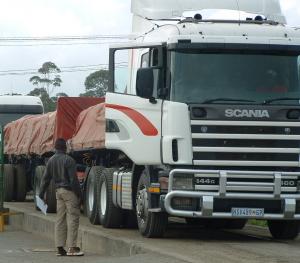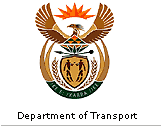 |
Fertiliser Manufacture and DistributionThe fertiliser manufacturing industry in KwaZulu-Natal is
located at Richards Bay, Umbogintwini, Durban and Cato
Ridge. Depots and agencies from which farmers can draw
requirements are located in many country towns around the
province.
There is strong competition between the different
producers, and they continually change their sources of raw
materials and attempt to optimise their distribution
arrangements to obtain maximum market penetration. The
producing companies deliver direct to farmers or provide
facilities at their depots for farmers and their
contractors to collect their orders.
The supply of ingredients to the fertiliser manufacturing
and blending facilities is complicated by the fact that,
although some ingredients are available from various
sources in South Africa, they must be combined with a
significant proportion of imported ingredients.
Phosphate rock is railed from mines at Phalaborwa (1.8
million tons per annum) via the coal line and Swaziland to
the major producer in Richards Bay.
Of the locally limited or unavailable local ingredients,
sulphur imports amounted to 876,294 tons in 2006 through
the port of Richards Bay, and potash imports to 186,618
tons through Durban and 22,000 tons through Richards Bay.

Fertiliser Depot at Cato Ridge
|
Fertiliser imports amounted to 613,547 tons
through Durban and 96,957 tons through Richards Bay in
2006. This consisted mainly of urea and ammonium
fertilisers from Europe, Canada and China. Most of the
ammonium fertiliser ingredients are sourced by road from
the petrochemical industry in Sasolburg. Transport of FertiliserThe fertiliser industry has transferred totally to road
transport for raw material input and for the delivery of
blended and straight fertilisers to users all over the
province.

Bagged Fertiliser on road
|
The distribution of approximately 350,000 tons per year
to farmers in KwaZulu-Natal, both from KZN factories
and by direct delivery from the Gauteng area, is now 100%
by road due to the difficulty in coordinating rail services
and the cost of rail freight (which involves double
handling, damage and losses). Thus, many of the new
fertiliser depots in the province are not
located on rail lines.
The delivery period is highly seasonal, dependent on
rainfall and the crops being planted. The largest user
in the province is the sugar industry, but the
reducing area being planted, due to land transfers, is
decreasing the demand by that industry.
|
 |



